Denmark
About Andrew Cusack
 Writer, web designer, etc.; born in New York; educated in Argentina, Scotland, and South Africa; now based in London.
Writer, web designer, etc.; born in New York; educated in Argentina, Scotland, and South Africa; now based in London. read more
News
Blogs
Reviews & Periodicals
Arts & Design
World
France
Mitteleuropa
Knickerbockers
Argentina
The Levant
Africa
Cape of Good Hope
Netherlands
Scandinavia
Québec
India
Muscovy
Germany
Academica
Politigården
The Police Headquarters, Copenhagen
One of the pleasures of the recent hit Danish television series Forbrydelsen (released in the UK as ‘The Killing’) is the occasional view it provides of Copenhagen’s police headquarters.
Politigården (lit. police-yard) is in a restrained Scandinavian modern classicism and was designed by Hack Kampmann.
It was constructed from 1918 to 1922 but Knapmann died in 1920, and his role as chief architect was assumed by his son Hans Jørgen Kampmann (whose brother Christian was also an architect).
The interior hints towards a variety of styles from Renaissance to Baroque and Art Deco, while the building rises around a large central circular courtyard roughly the same diameter as the Pantheon in Rome.
Some architectural historians consider Politigården the last neoclassical public building in northern Europe (so far, that is). (more…)
Visit Denmark
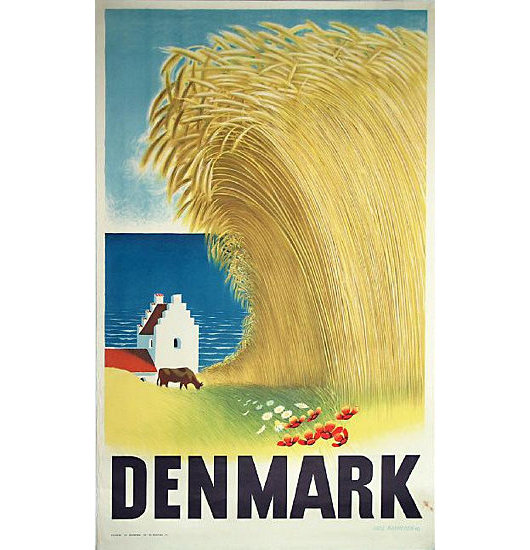
Having previously explored the world of Finnish travel posters, I happened to come across various posters advertising the happy kingdom of Denmark, whose current monarch is a Cambridge-trained classical archeologist, vestment designer, and published Tolkein illustrator. Click the little numbers to view the posters.
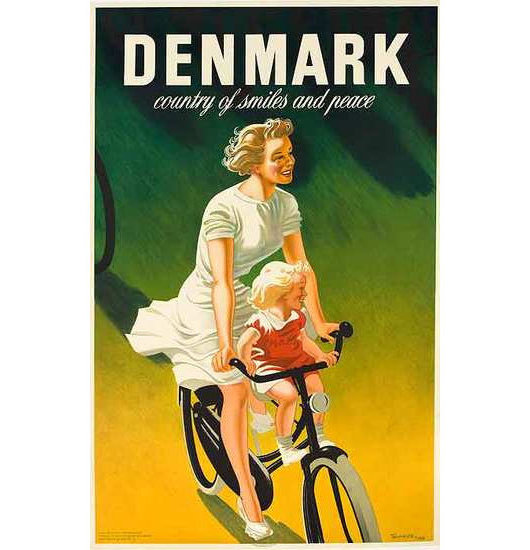
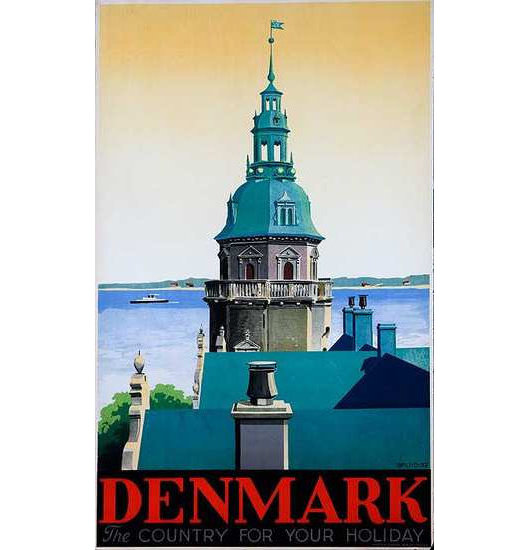
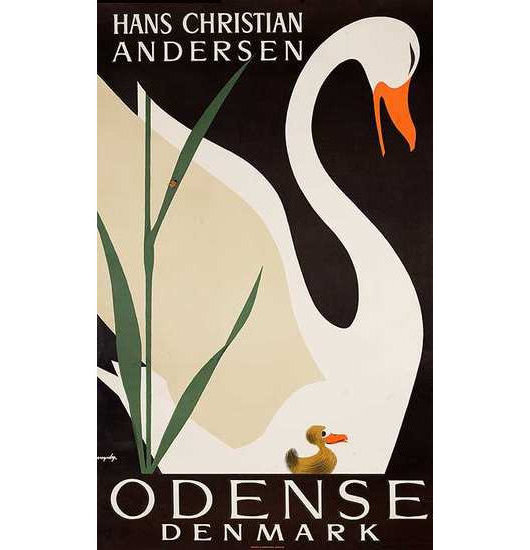
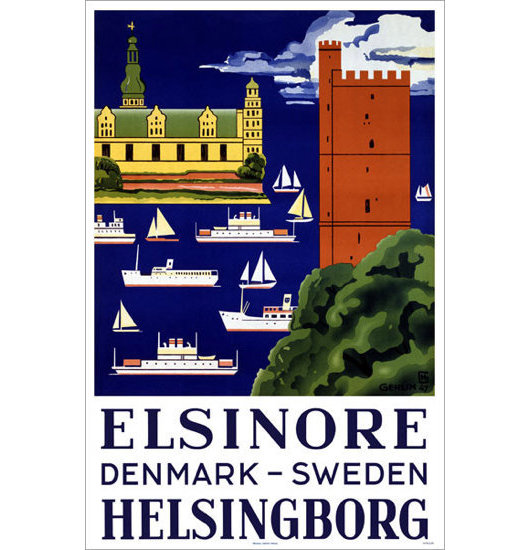
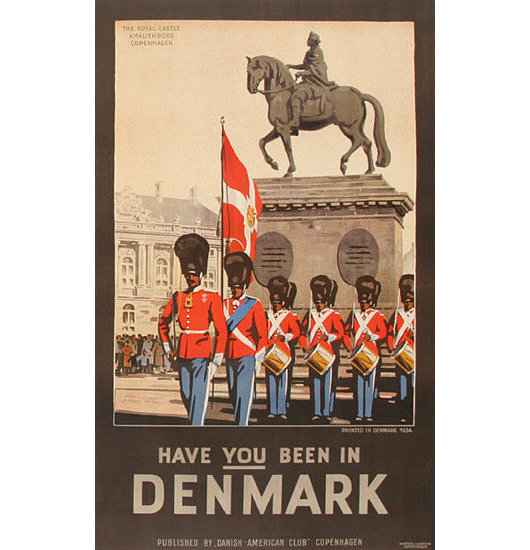
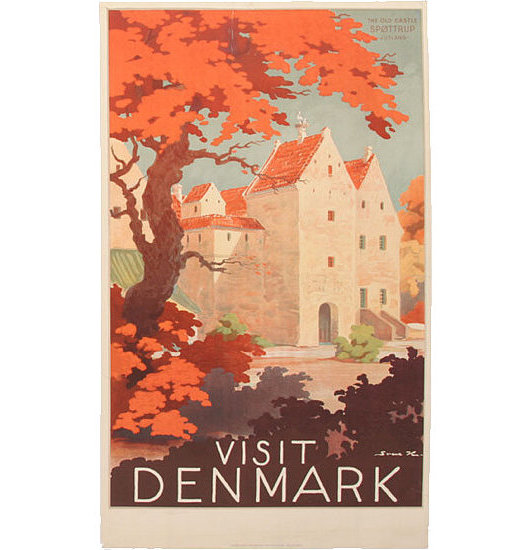
Previously: Come to Finland
Films Recently Watched
In reverse chronological order, from the most recently viewed backwards.
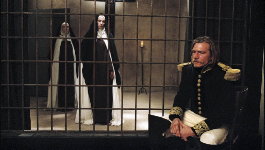
|
Ne touchez pas la hache (2007, France) — Based on Balzac’s La Duchesse de Langeais. I think we need more films set in Restoration France, but this one often fell flat. |
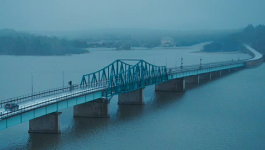 |
Män som hatar kvinnor (2009, Sweden) — A journalist has six months to investigate the strange murder of a girl from the island estate of a prominent family. A very good mystery, though I had to fast-forward multiple times due to graphicness. Released in the U.S. as ‘The Girl With the Dragon Tattoo’ instead of ‘Men Who Hate Women’. |
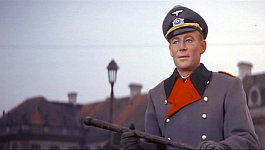
|
The Night of the Generals (1967, Great Britain-France) — A quality production depicting the quest of a German officer to obtain justice in arresting a sociopathic general for the murder of a Polish prostitute. Omar Sharif, Peter O’Toole, Philippe Noiret, Christopher Plummer, Charles Gray, and Tom Courtenay. |
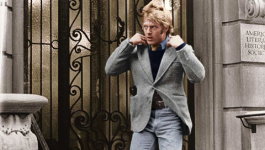
|
Three Days of the Condor (1975, U.S.A.) — A literary analyst at a CIA front organisation returns to the office from lunch to find all his colleagues shot dead. Robert Redford and Max von Sydow. |
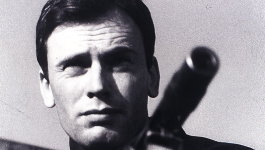
|
Le combat dans l’île (1962, France) — A right-wing extremist thinks he’s assassinated a prominent left-wing extremist but soon finds not all is as it appears. Romy Schneider plays the woman caught between the would-be murderer and his typographer friend. |

|
À bout de souffle (1960, France) — A rather lame romanticisation of a cop-murderer and his exploits from Jean-Luc Godard. Paris in the 1950s looks great though. |
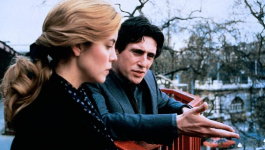
|
Defence of the Realm (1985, Great Britain) — A newspaper exposes a Member of Parliament as a potential spy, but it turns out the story is much more complicated than first appearances would have it. Starring Gabriel Byrne, Ian Bannen, Greta Scacchi, Denholm Elliott, Bill Paterson, and Robbie Coltrane. |
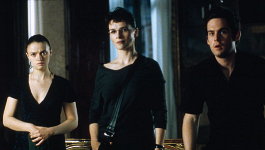
|
A Few Days in September (2006, France) — An intriguing spy drama set in the days leading up to September 11th, a French spy (Juliette Binoche) is minding the grown children of an old ex-C.I.A. agent (Nick Nolte) pursued by a psychotic assasin (John Torturro). |
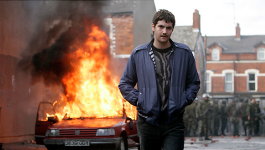
|
50 Dead Men Walking (2008, Great Britain-U.S.A.-Canada) — Based on the story of terrorist-turned-informer Martin McGartland, with Ben Kingsley playing his RUC handler. |
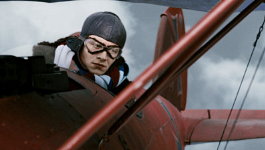
|
The Red Baron (2008, Germany) — A very light handling of an interesting historical character man. Everyone dresses well, but Joseph Fiennes as Billy Bishop, the Red Baron’s nemesis, is the least convincing fighter ace in history. |
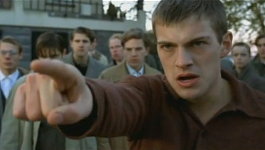
|
Ondskan (2003, Sweden) — A surprisingly good film in the boarding-school resistance-to-bullies category with a few twists, only slightly tinged by the socialism of the author of the novel on which it’s based. |
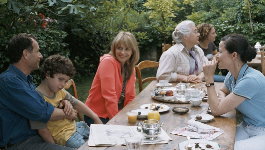
|
L’Heure d’été (2008, France) — Three siblings deal with their mother’s estate. |
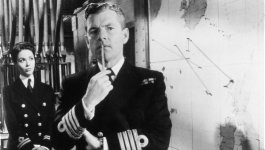
|
Sink the Bismarck! (1960, Great Britain) — Cracking naval tale. A classic of the World War II genre. |
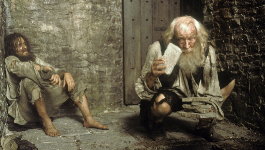
|
The Count of Monte Cristo (2002, U.S.A.) — Significant changes from the plot of the book besides the usual compression of the story line mar this film. Just not as worthwhile as the lavishly done 1998 French mini-series. |
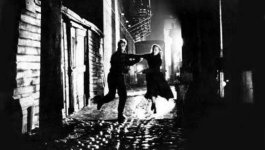
|
On the Waterfront (1954, U.S.A.) — A priest tries to convince a mob lackey to testify against his bosses to challenge their murderous and abusive control of the waterfront. Particularly intriguing as the director was brave enough to challenge Hollywood communists in the 1950s. |
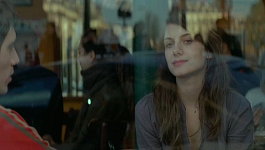
|
Paris (2008, France) — The interweaving lives of a handful of Parisians. I will see any film that has Juliette Binoche or Mélanie Laurent in it, and this film has both. Also with François Cluzet (of “Ne le dis à personne/Tell No One”) and Albert Dupontel. |
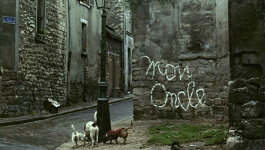
|
Mon Oncle (1958, France) — Jacques Tati’s first colour film, Monsieur Hulot continues to struggle with the postwar infatuation with modern architecture and consumerism. On its release it was condemned for its obviously reactionary world-view, but has since become a cult favourite. |
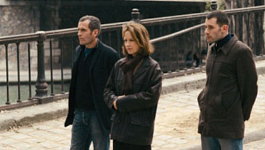
|
Le Petit Lieutenant (2005, France) — A young police recruit from the provinces joins a Parisian precinct and investigates a murder alongside his female unit commander, a recovering alcoholic. |
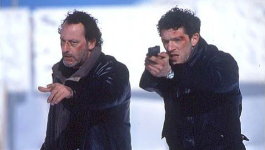
|
Les rivières pourpres (2000, France) — Jean Reno plays a police detective sent to a small university town in the Alps to investigate a brutal murder. Meanwhile, another detective (played by Vincent Kassel) looks into the desecration of the grave of a young girl. The plots soon become intertwined in an intriguing fashion. This film failed to live up to its potential (the university aspect could have been developed further) but is still a decent cop flick. |
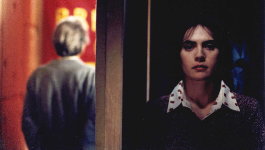
|
Buongiorno, notte (2003, Italy) — The kidnapping of Aldo Moro by the Red Brigades. |
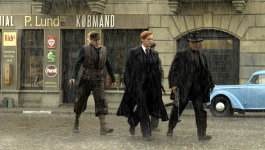
|
Flammen & Citronen (2008, Denmark) — Another good Scandinavian World-War-II resistance movie, alongside Norway’s “Max Manus” of the same year. (Previously covered here). Mads Mikkelsen (the Bond villain in “Casino Royale”) plays ‘Citronen’. |
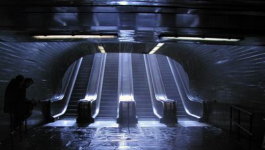
|
Kontroll (2003, Hungary) — The ticket collectors of the Budapest Metro worry about a series of mysterious platform deaths. Varies between the comic, the thrilling, and the tiresome. |
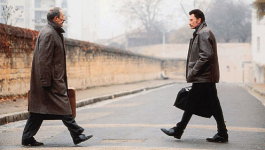
|
L’homme du train (2002, France) — A man steps off a train planning to rob a bank, but strikes up a friendship with a retired poetry teacher. Jean Rochefort and Johnny Hallyday are a surprisingly good pairing. |
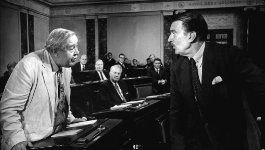
|
Advise and Consent (1962, U.S.A.) — The Senate must either approve or reject the President’s nomination for Secretary of State, but plots and intrigues are afoot. Otto Preminger does Washington, and does it well. |
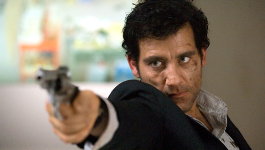
|
The International (2009, U.S.A.-Germany-Great Britain) — A cracking conspiracy thriller staring Clive Owen as a stubborn Interpol investigator and Naomi Watts as a Manhattan Assistant D.A. Includes a fun shoot-out in the Guggenheim. |
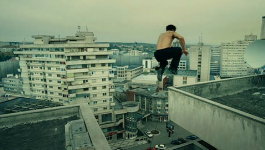
|
Banlieue 13 (2004, France) — Parkour-heavy action film set in a Parisian crime ghetto of the near-future. |
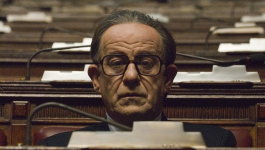
|
Il divo (2008, Italy) — Biographical film of the seven-time Italian prime minister Giulio Andreotti. Toni Servillo’s portrayal of the main character, however, crosses the line into caricature. |
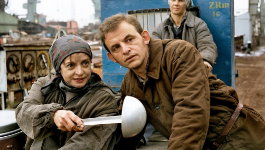
|
Strajk – Die Heldin von Danzig (2006, Germany-Poland) — A German film in Polish about the hardest-working employee at the Gdansk shipyards who finally takes a stand against the horrendous working conditions under the Communist regime. |
Christen Købke in London
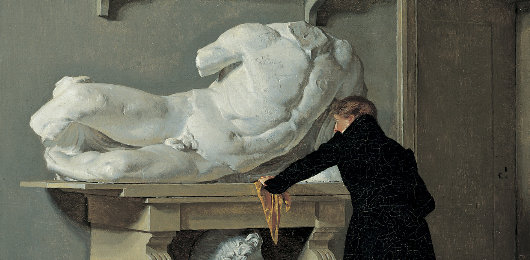
THROUGH JUNE 13, the National Gallery in London is exhibiting “Christen Købke: Danish Master of Light”, a small show of the neglected Danish Golden Age painter but the first exhibition exclusively of his works outside of Denmark. “Kobke generally chooses the quietest corner, or a view from the side,” writes Waldemar Januszczak in The Times. “What fascinates him is the way light falls on the old stones, or the tufts of grass growing between the cracks. Throughout his art, whether he is painting landscapes or people, Købke seems always to be noticing the decay of the world he grew up in.” Januszczak suggests that the warmth of Købke’s work is in reaction to the turbulence of his country’s position in Europe at the time — Denmark backed the wrong horse in the Napoleonic wars and turned to neutrality, only to face a pre-emptive attack by the British in which Copenhagen was ferociously bombarded. The painter was born three years after this humiliation, and at age 12 began his studies at the Royal Danish Academy, where he studied under Christoffer Wilhelm Eckersberg, the ‘Father of Danish painting’.
The talented Købke painted portraits, landscapes, and other scenes. The show at the National Gallery includes my favourite Købke portrait, that of his friend and fellow artist, the landscape painter Frederik Hansen Sødring, on loan from Copenhagen’s Hirschsprung Collection.
His capability aside, what I like about Købke is that he is a certifiable local boy, rarely straying from the vicinity of his native Copenhagen except for the period of study in Italy required of the academically trained artist. His portraits are of his family and his friends, his landscapes of nearby rustic lanes and royal castles. A shame he died of pneumonia just 37 years old.
I haven’t had the chance to view any of his works in the flesh, but Londoners might want to avail themselves of this rare chance to see most of Købke’s capable work while on show in the metropolis. (more…)
Flammen & Citronen
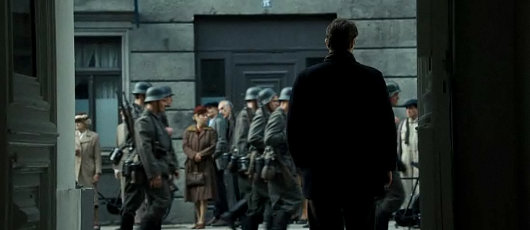
IT’S NOT VERY OFTEN that a big-budget period film comes out of Scandinavia, but recently there’ve been not one, but two. Here mentioned is the Danish film “Flammen & Citronen”, an action-drama based on the Second World War actions of Bent Faurschou-Hviid (nicknamed “Flame”) and Jørgen Haagen Schmith (“Citron”). Faurschou-Hviid and Schmith were members of the Holder Danske group, a Danish resistance organization primarily composed of Danes who had previously fought for Finland against the Soviet Union in the Winter War of 1939-1940. (more…)
A Happy Birthday to Her Majesty
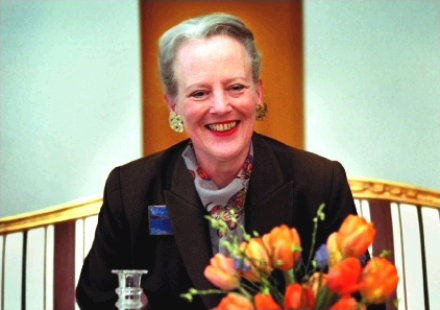

In honour of the anniversary of the birth of Her Majesty Queen Margrethe II of Denmark, I raised a glass of Warre’s (Purveyors to the Household of the Queen of Denmark) this evening. May God bless and keep Her Majesty!
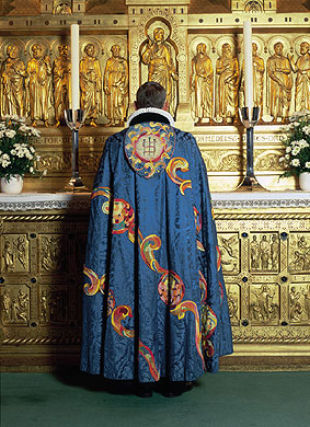
Some of you may recall that Her Majesty is of a somewhat artistic temperment. She sent her sketches inspired by The Lord of the Rings to J.R.R. Tolkein while he was alive, and the author liked them so much he had them published in the Danish edition of the trilogy. Above is an episcopal cope designed by Her Majesty in 1988 for the Cathedral of Viborg.
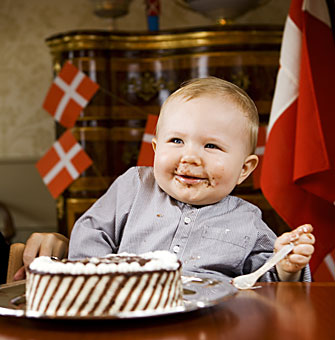
His Royal Highness Prince Christian, the Queen’s grandson and the future King of Denmark.
Naturally, we also wish a very happy birthday and many, many bountiful blessings to another of Christendom’s reigning monarchs: Christ’s vicar and our Holy Father, Pope Benedict XVI, who, it seems, is a reader of Chronicles. God bless our Pope, the great, the good!
Search
Instagram: @andcusack
Click here for my Instagram photos.Most Recent Posts
- Teutonic Takeover March 10, 2025
- Katalin Bánffy-Jelen, R.I.P. March 3, 2025
- Substack Cusackiensis March 3, 2025
- In the Courts of the Lord February 13, 2025
- American Exuberant February 10, 2025
Most Recent Comments
Book Wishlist
Monthly Archives
Categories


